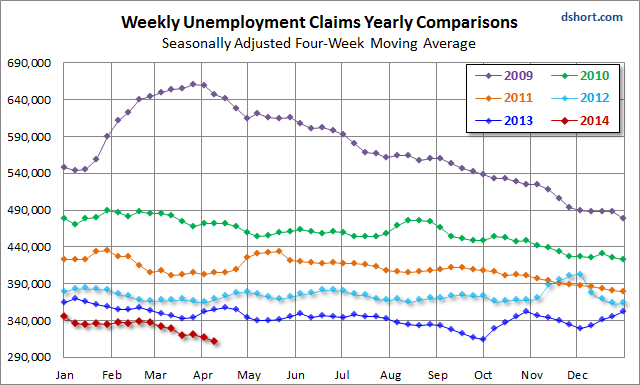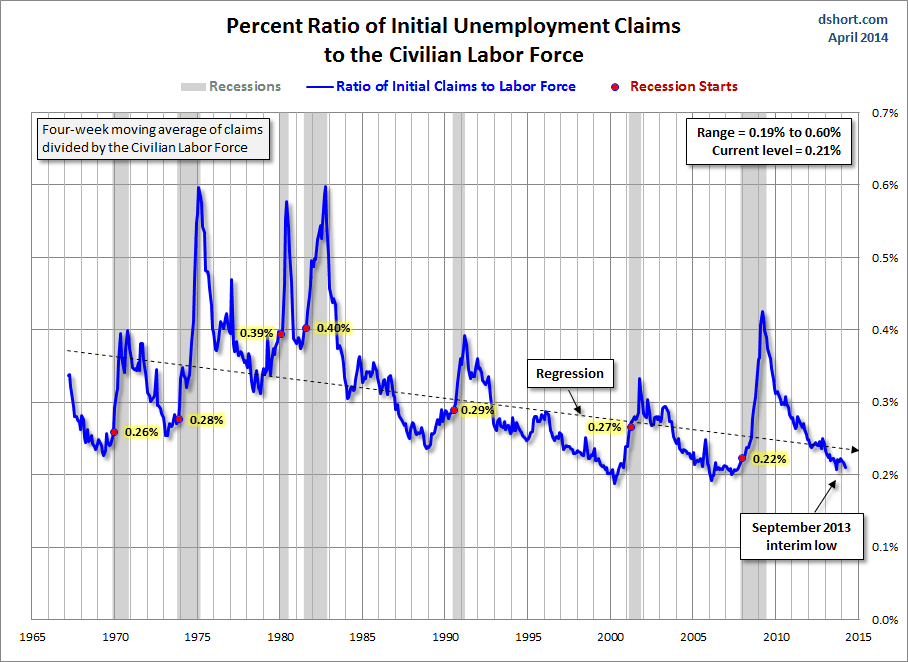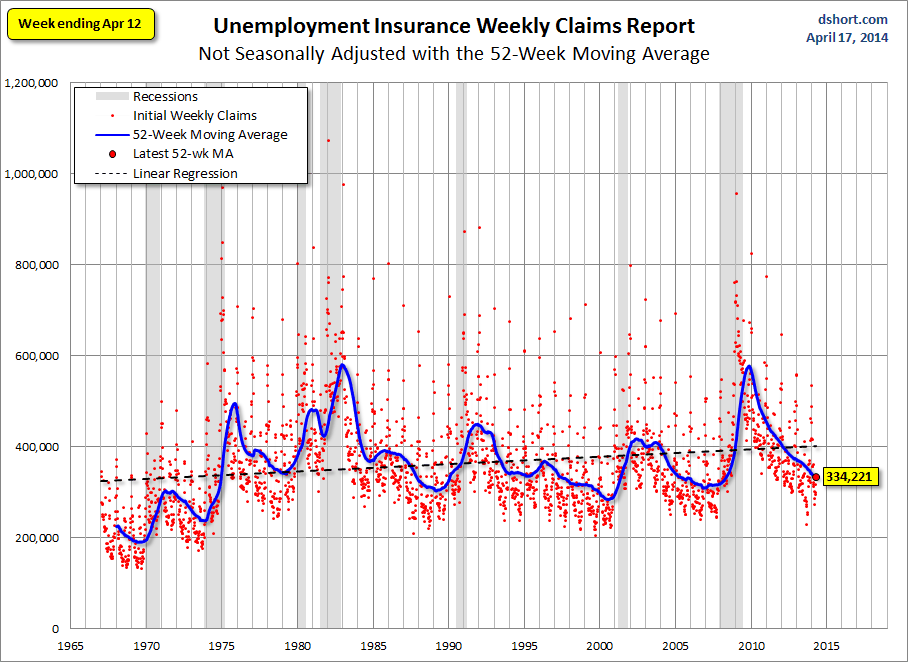The Unemployment Insurance Weekly Claims Report was released this morning for last week. The 304,000 new claims number was an increase 2,000 from the previous week's 302,000 (revised from 300,000). The less volatile and closely watched four-week moving average, which is usually a better indicator of the trend, fell by 4,750, now at 312,000, the best since October 2007 -- two months before the onset of the last recession.
Here is the opening of the official statement from the Department of Labor:
In the week ending April 12, the advance figure for seasonally adjusted initial claims was 304,000, an increase of 2,000 from the previous week's revised level. The previous week's level was revised up by 2,000 from 300,000 to 302,000. The 4-week moving average was 312,000, a decrease of 4,750 from the previous week's revised average. This is the lowest level for this average since October 6, 2007 when it was 302,000. The previous week's average was revised up by 500 from 316,250 to 316,750. [See full report]
Today's seasonally adjusted number at 304K came in below the Investing.com forecast of 315K.
Here is a close look at the data over the past few years (with a callout for the past year), which gives a clearer sense of the overall trend in relation to the last recession and the volatility in recent months.

As we can see, there's a good bit of volatility in this indicator, which is why the 4-week moving average (the highlighted number) is a more useful number than the weekly data. Here is the complete data series.

Occasionally I see articles critical of seasonal adjustment, especially when the non-adjusted number better suits the author's bias. But a comparison of these two charts clearly shows extreme volatility of the non-adjusted data, and the 4-week MA gives an indication of the recurring pattern of seasonal change in the second chart (note, for example, those regular January spikes).

Because of the extreme volatility of the non-adjusted weekly data, a 52-week moving average gives a better sense of the secular trends. I've added a linear regression through the data. We can see that this metric continued to fall below the long-term trend stretching back to 1968.
Here is an overlay of the past three calendar years and the beginning of 2013 using the 4-week moving average. The purpose is to show the relative annual slopes since the peak in the spring of 2009. Last year (blue line at the bottom) hit a trough at the end of September. It then zigzagged higher to the end of the year. In 2014 this metric was relatively flat for the first two months, but it has trended lower since the end of February. This indicator is now only at its lowest level since October 6, 2007 -- two months before the start of the last recession.

For an analysis of unemployment claims as a percent of the labor force, see my recent commentary What Do Weekly Unemployment Claims Tell us About Recession Risk? Here is a snapshot from that analysis.

For a broader view of unemployment, see the latest update in my monthly series Unemployment and the Market Since 1948.

